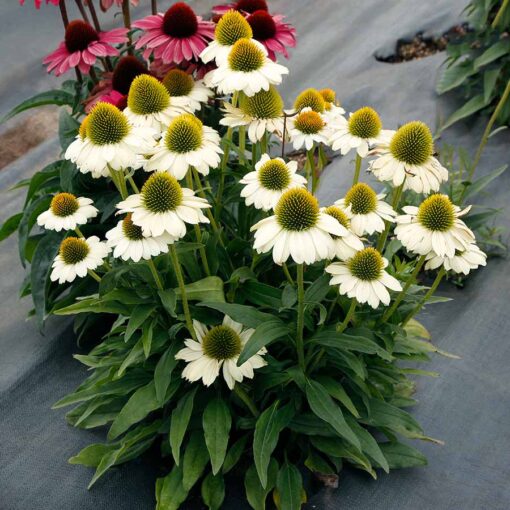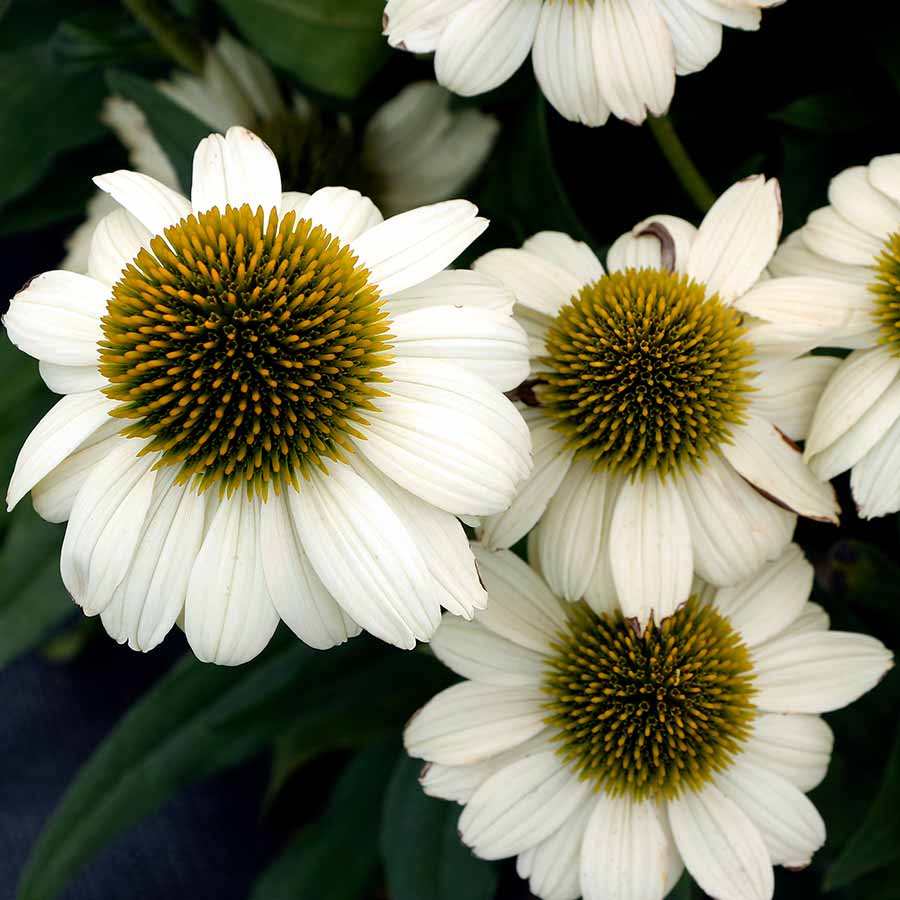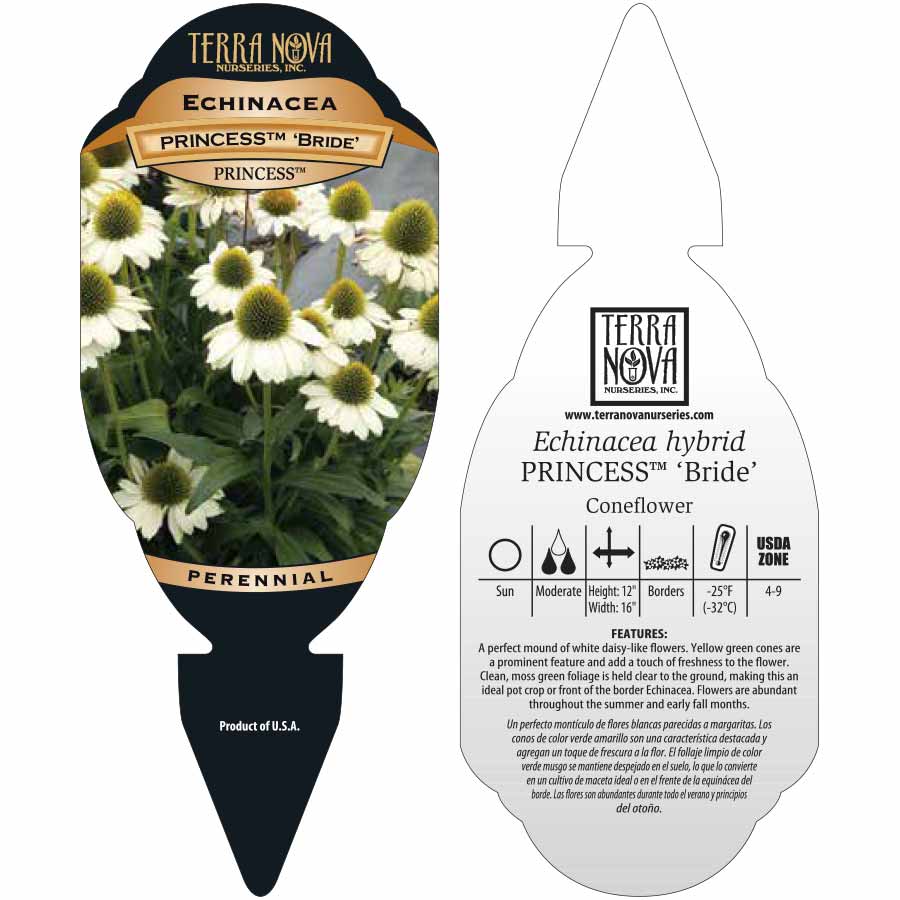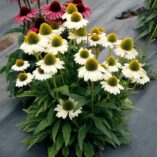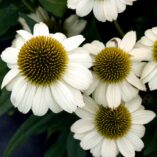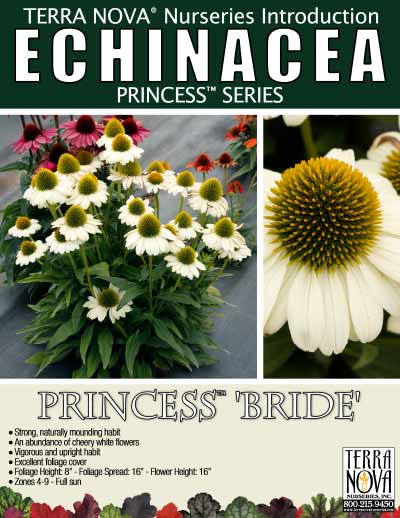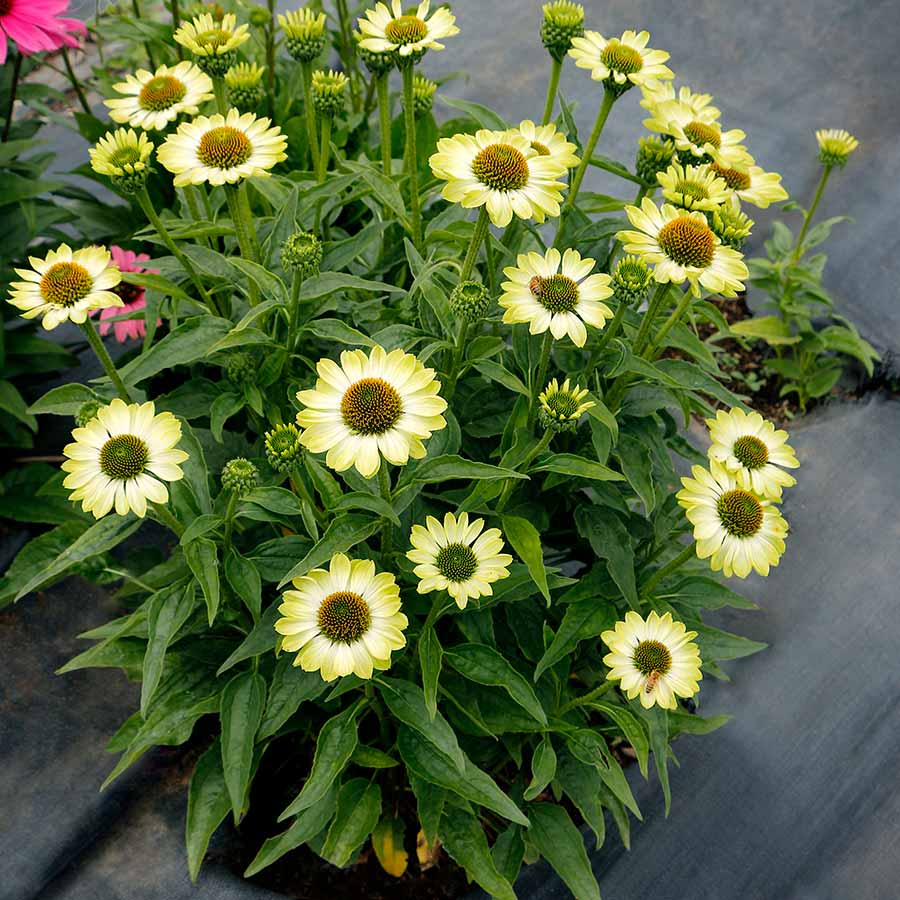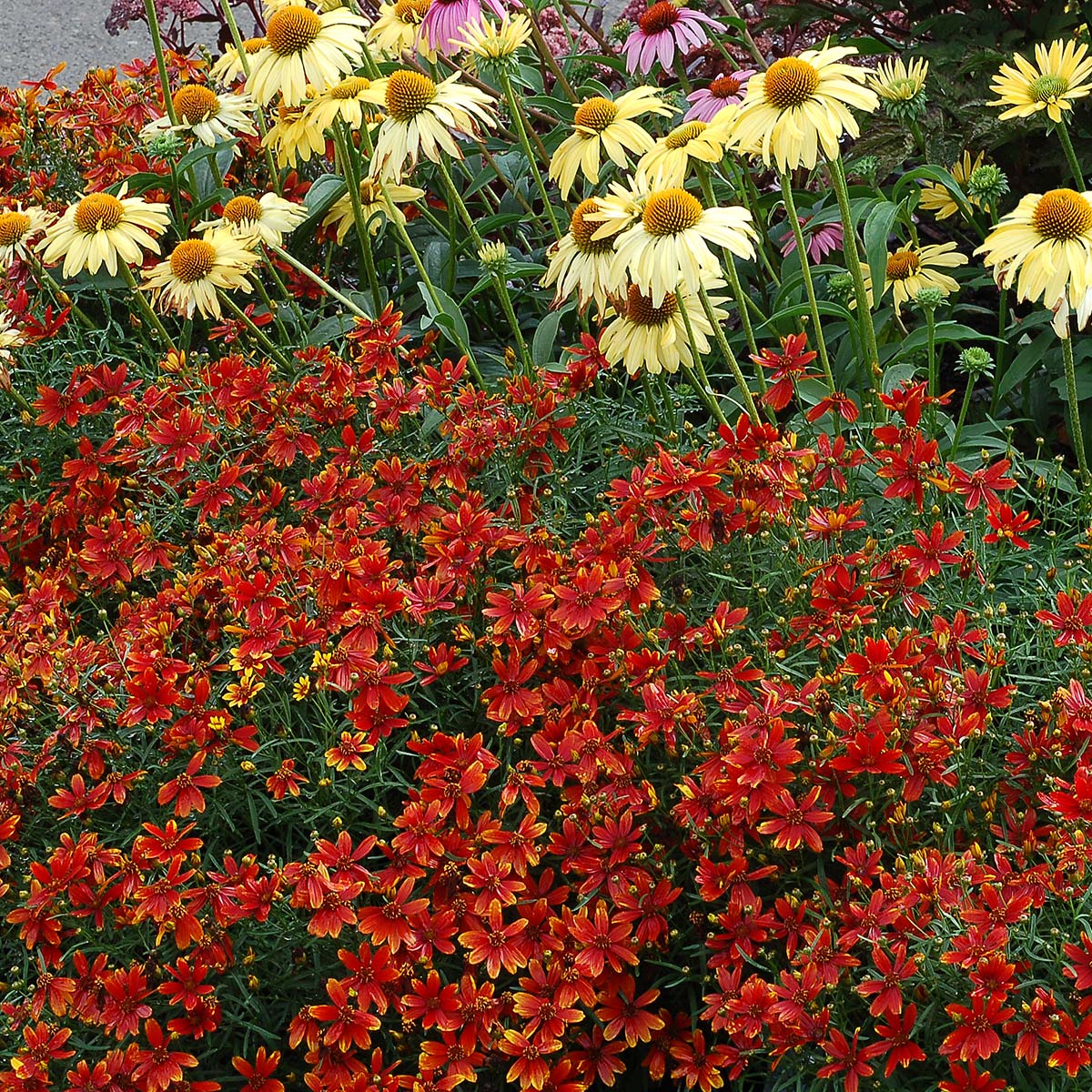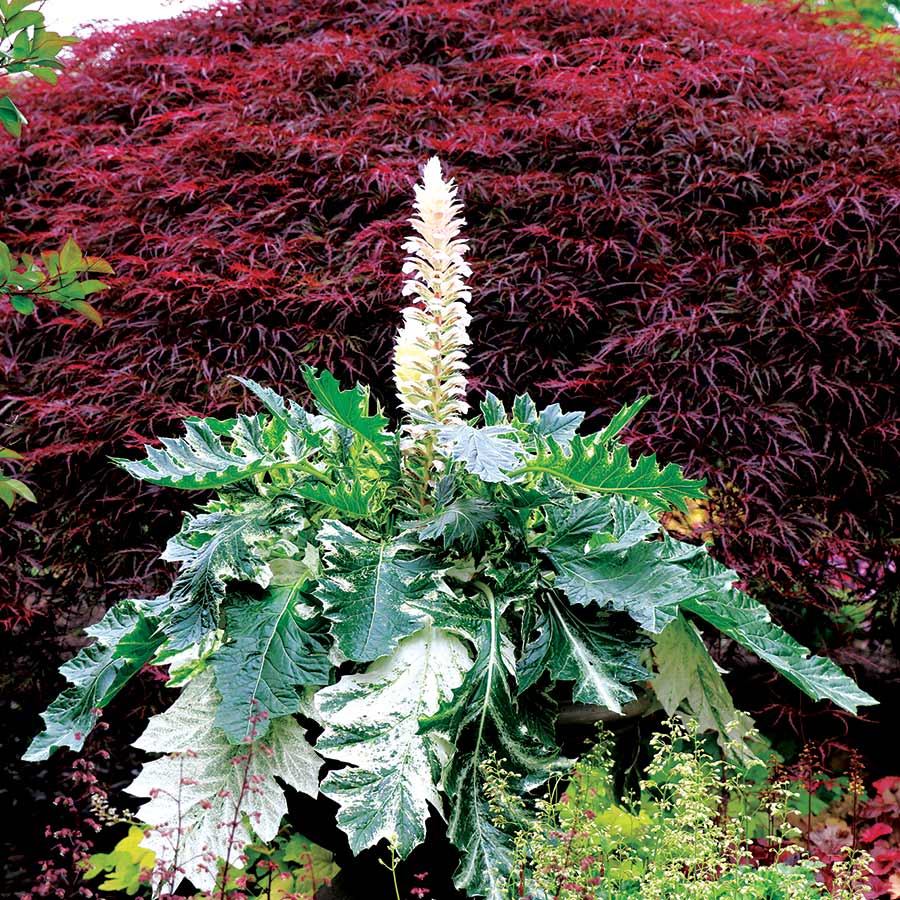| Common Name | Coneflower |
|---|---|
| Family | Asteraceae |
| Genus | Echinacea |
| species | -- |
| Plant Series | Echinacea PRINCESS™ Series |
| Plant Type | Perennial |
| US Patent # | -- |
| EU Patent # | -- |
| Bloom Time | June, July, August, September, October |
| Flower Color | White |
| Foliage Color | Green |
| Dormancy | Winter |
| Exposure | Full Sun |
| Growth Habit | Clumping |
| Growth Rate | Fast |
| Hardiness Zone | 4, 5, 6, 7, 8, 9 |
| How Different? | -- |
| Landscape Value | Long summer bloom, mixed beds, border edge. |
| Most Active Growing Season | Spring |
| Persistence | Deciduous |
| Size (HT/W/FL HT) | 12" / 16" / 16" |
| Soil (Garden) | Average soil, coarse and slightly mineral soils are best. |
| Water (Garden) | Average |
| Special Uses | Cut Flower, Deep South, Deer Resistant, Fragrant, Hummingbird Attractor, Low Water Usage, Pollinator Attractor |
| Comments | -- |
Echinacea PRINCESS™ ‘Bride’
|
*** PLEASE NOTE ***
Ideal shipping window is January thru May. After May 31, ALL Echinacea should be pre-booked 6 months in advance for best availability. |
A perfect mound of white daisy-like flowers. Yellow green cones are prominent feature and add a touch of freshness to the flower. Clean, moss green foliage is held clear to the ground, making this an ideal pot crop or front of the border Echinacea. Flowers are abundant throughout the summer and early fall months.
USDA Hardiness Zone(s): 4-9
Size (HT/W/FL HT): 12″ / 16″ / 16″
Exposure: Full Sun
Bloom Time(s): June, July, August, September, October
| Water (Greenhouse) | Dry moderately between waterings. |
| EC | 0.7 |
| pH | 5.8 – 7.3 |
| Fertility Needs | 75 – 100 ppm |
| Notes | Plants shipped in fall require winter protection. We recommend transplanting to a 4″ pot from a plug, not a larger size container if you receive the plants in the fall. Grow with 50° – 55° F nights and 55° – 65° F days. Facultative long day plant. Day-length extension up to 16 hours has proven beneficial for promoting flowering. Low pH can be fatal. |
| Finish Time to 4″ | 6 – 8 weeks |
| Finish Time to Gallon | 12 – 14 weeks |
| Day Length for Flowering | Long Day |
Planting
Plant one liner per 4-inch or gallon pot. Make sure not to cover the crown with soil by planting too deep; incorrect planting depth is the most common cause for losses in Echinacea. The soil levels of the pot and the liner should match up evenly. A broad-spectrum preventative fungicide after transplanting is recommended – check labels for desired rates and application intervals, and (as with any chemical) test on a small group of plants before applying to the entire crop.
Culture
Media: Plant Echinacea in a well-drained media.
Temperature: Echinacea does well with 50 to 55°F nights and 60 to 65°F days.
Light: Provide 2,500 to 5,000 foot-candles of light. Echinacea is a facultative long-day plant with a critical day length of between 12 and 13 hours (depending on variety). It is beneficial to bulk plants under short-days and then force flowering under long-day conditions. This can be achieved using natural short-days or black cloth. Photoperiods of over 16 hours of light are antagonistic to flowering, but do not stop it entirely. Putting plants that have already flowered under short days may induce dormancy. Forcing is best done using daylength extension as opposed to night interruption.
PGRs: Configure has been observed to promote basal branching and should be used when bulking the plant in its vegetative state. It can sometimes cause distorted growth on leaves that are emerging at the time of application, but the plant quickly grows out of it. It is generally recommended to do more applications at lower rates as opposed to higher rates with a single application.
Fertilizer/Watering: Supply a low-medium rate of constant liquid feed at 100- to 150-ppm of 20-10-20 fertilizer. Allow the plants to dry moderately between watering as it is critical to maintain wet and dry cycles for overall plant health. Note: for people that overwinter the Echinacea, keep the EC as close to 0 as possible when they are dormant. Avoid late applications of slow release fertilizers.
Pests/Disease: Thrips can be a problem as the plants begin to flower. Pythium and Phytophthora can be problems if the plants stay waterlogged for prolonged amounts of time. Plants should be allowed to dry moderately between waterings. Plants can be susceptible to botrytis if adequate spacing and airflow is not maintained. It is generally recommended to water in the morning to avoid sending the plants into their night cycle with water on the foliage.
Scheduling: Finish time from a 72-cell liner to a 4-inch pot is six to eight weeks. From 72-cell to 1-gallon pot is 12 to 14 weeks. Finish time varies by cultivar.
All photography is property and © of TERRA NOVA® Nurseries, and is only to be used for promotional material related to TERRA NOVA® products.
Please credit TERRA NOVA® Nurseries in the following manner:
Photo(s) courtesy of TERRA NOVA® Nurseries, Inc.
www.terranovanurseries.com
  |
  |
Our tags are produced using Adobe Illustrator (.ai) format.
  |
Get the latest FREE version of Acrobat® Reader™
here.- September, 2024 – Greenhouse Product News (GPN): Blossoming Innovations – click here
- July, 2024 – FloralDaily: Terra Nova Nurseries to unveil new catalog and varieties at Cultivate 2024 – click here
- April, 2024 – FloralDaily: Terra Nova Nurseries spotlights heat- and humidity-tolerant varieties – click here


